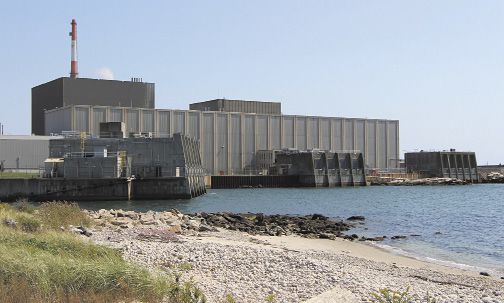Processing Your Payment
Please do not leave this page until complete. This can take a few moments.
-
News
-
Editions
-
- Lists
-
Viewpoints
-
HBJ Events
-
Event Info
- 2024 Economic Outlook Webinar Presented by: NBT Bank
- Best Places to Work in Connecticut 2024
- Top 25 Women In Business Awards 2024
- Connecticut's Family Business Awards 2024
- What's Your Story? A Small Business Giveaway 2024 Presented By: Torrington Savings Bank
- 40 Under Forty Awards 2024
- C-Suite and Lifetime Achievement Awards 2024
- Connecticut's Health Care Heroes Awards 2024
-
-
Business Calendar
-
Custom Content
- News
-
Editions
View Digital Editions
Biweekly Issues
- April 29, 2024
- April 15, 2024
- April 1, 2024
- March 18, 2024
- March 4, 2024
- February 19, 2024
- February 5, 2024
- January 22, 2024
- January 8, 2024
- + More
Special Editions
- Lists
- Viewpoints
-
HBJ Events
Event Info
- View all Events
- 2024 Economic Outlook Webinar Presented by: NBT Bank
- Best Places to Work in Connecticut 2024
- Top 25 Women In Business Awards 2024
- Connecticut's Family Business Awards 2024
- What's Your Story? A Small Business Giveaway 2024 Presented By: Torrington Savings Bank
- 40 Under Forty Awards 2024
- C-Suite and Lifetime Achievement Awards 2024
- Connecticut's Health Care Heroes Awards 2024
Award Honorees
- Business Calendar
- Custom Content
CT to move ahead with nuke power auction
 HBJ file photo
Millstone Power Station in Waterford
HBJ file photo
Millstone Power Station in Waterford
 HBJ file photo
Rob Klee, commissioner of DEEP
HBJ file photo
Rob Klee, commissioner of DEEP
 Contributed photo
PURA chair Katie Dykes
Contributed photo
PURA chair Katie Dykes
Waterford’s Millstone Power Station on Monday notched another victory in its quest to secure long-term contracts to sell electricity to Connecticut’s utilities.
Despite the fact that a state-hired consultant concluded the nuclear plant will remain profitable for the next 18 years, and that the plant’s Virginia-based owner Dominion benefited from the recent federal tax overhaul, state utility regulators said in a draft report Monday that they would move forward with a controversial procurement process that could result in the 2,200-megawatt nuclear plant -- Connecticut’s largest power generator -- selling up to 75 percent of its output to utilities Eversource and Avangrid.
The utilities, which along with natural-gas power plants have opposed the procurement process, would then re-sell the power into the wholesale market. Depending on what the utilities pay for the electricity compared to the current market price, ratepayers could win or lose on the transaction. Opponents of the scheme have insisted it will raise electric bills.
“We appreciate the work of [regulators] but still haven’t seen any evidence that Millstone needs a handout in the form of an above-market contract—one that will directly harm Connecticut ratepayers,” NRG, a key opponent of the controversial procurement, said in an emailed statement Monday. “The state’s own consultants confirmed that the plant will be profitable for at least through 2035, and it defies logic to conclude that this Millstone is a ‘renewable’ resource like wind and solar, while it generates waste that will be hazardous for thousands of years.”
Dominion has said it currently sells most of Millstone’s output to hedge funds and other third-parties in advance. Doing that, instead of selling into the day-ahead wholesale market, provides revenue certainty, the company has said.
The procurement was authorized by the state legislature last year, following a fierce lobbying battle between Dominion and opponents, who have labeled the scheme an unneeded nuclear subsidy.
Dominion issued a statement praising the draft decision from the Department of Energy and Environmental Protection and the Public Utilities Regulatory Authority, who were ordered last year by Gov. Dannel Malloy to assess Millstone’s viability.
“On behalf of the 1,500 dedicated women and men working at Millstone Power Station, Dominion Energy thanks DEEP and PURA for their exhaustive work on this appraisal and for their conclusion to conduct a procurement for new and existing zero carbon facilities,” said Paul Koonce, CEO of the company’s Power Generation Group. “The final appraisal is clear. Millstone is vital for Connecticut to meet its cheaper, cleaner and more reliable energy goals and aggressive carbon reduction goals. Dominion Energy is committed to continuing to work with state energy officials to achieve those goals.”
Much of the debate all along has centered around whether or not Millstone, facing pressure from low natural gas prices, needed the out-of-market contracts to remain profitable into the future.
Millstone says it does, pointing to announced retirements of five nuke plants around the country.
However, a technical consultant hired by the Department of Energy and Environmental Protection and the Public Utilities Regulatory Authority concluded last year that Millstone was likely to be economically viable through 2035. That added to conclusions reached by MIT researchers, which found Millstone to be the nation’s most profitable plant.
But Dominion argued that DEEP and PURA’s consultant, Levitan & Associates, did not correctly account for certain operating costs in its analysis.
That was largely because Dominion had refused to release financial information to regulators when Levitan was preparing its analysis in August.
DEEP and PURA wrote in their report Monday that they did not have enough information on Millstone’s costs, though Dominion submitted some information later, which was shielded from public view.
“After the [Levitan] analysis was complete, Dominion submitted a two-page summary of high-level, short term forward financial projections on November 30, 2017, and a longer, redacted document on January 10, 2018,” the agencies wrote. “Constraints imposed by the timing of the Dominion submissions, the need for verification, and complexity of the detailed [Levitan] analysis made it impossible for DEEP and PURA to verify the cost assumptions asserted in this proceeding.”
Though the agencies had incomplete financial information, they concluded that Millstone’s continued operation could be at risk, depending on various future scenarios.
Millstone employs 1,100 people. If the plant retired, it would make it difficult for Connecticut to achieve its legally mandated greenhouse gas reductions, and it would increase New England’s already high reliance on natural gas. Replacing Millstone’s output with zero-carbon resources would cost an estimated $5.5 billion.
ISO New England said in a report this month that the loss of Millstone could lead to rolling blackouts by 2025.
Millstone opponents have argued that all New England states should share in the cost of supporting Millstone, since its power benefits the entire region. However, DEEP and PURA said that doesn’t appear to be an option, as ISO New England said Millstone wouldn’t qualify for a reliability-must-run contract on the basis of transmission security.
DEEP and PURA said they would continue to seek more regional options for nuclear power, such as a clean energy forward market or zero emissions credits.
"To have this process advance signals that Connecticut can do its part, but a regional dialogue must continue, and hopefully the ISO will be a partner in that," PURA chair Katie Dykes said in a media call Monday afternoon.
Besides nuclear power, other facilities that would be eligible to compete in the procurement include hydropower and Class I renewable energy sources, which include solar, wind, fuel cells, anaerobic digesters and several other types of technologies.
Though officials could not say who would bid into the procurement, one potential competitors is Seabrook Station Nuclear Power Plant in New Hampshire. A Millstone bid would be scored on price alone, but if it can demonstrate to regulators that it is indeed financially at risk, it would get a boost in the scoring, because that would allow non-price benefit of the plant, such as its zero emissions, to be considered.
DEEP and PURA will finalize their report next month, after taking public comment on the latest draft.
DOWNLOAD PDFs
Read DEEP and PURA's draft report
Read more
Millstone wins “at risk” status

2022 Giving Guide
This special edition informs and connects businesses with nonprofit organizations that are aligned with what they care about. Each nonprofit profile provides a crisp snapshot of the organization’s mission, goals, area of service, giving and volunteer opportunities and board leadership.
Learn more
Subscribe
Hartford Business Journal provides the top coverage of news, trends, data, politics and personalities of the area’s business community. Get the news and information you need from the award-winning writers at HBJ. Don’t miss out - subscribe today.
Subscribe
2024 Book of Lists
Delivering Vital Marketplace Content and Context to Senior Decision Makers Throughout Greater Hartford and the State ... All Year Long!
Read Here-
2022 Giving Guide
This special edition informs and connects businesses with nonprofit organizations that are aligned with what they care about. Each nonprofit profile provides a crisp snapshot of the organization’s mission, goals, area of service, giving and volunteer opportunities and board leadership.
-
Subscribe
Hartford Business Journal provides the top coverage of news, trends, data, politics and personalities of the area’s business community. Get the news and information you need from the award-winning writers at HBJ. Don’t miss out - subscribe today.
-
2024 Book of Lists
Delivering Vital Marketplace Content and Context to Senior Decision Makers Throughout Greater Hartford and the State ... All Year Long!
ABOUT
ADVERTISE
NEW ENGLAND BUSINESS MEDIA SITES
No articles left
Get access now
In order to use this feature, we need some information from you. You can also login or register for a free account.
By clicking submit you are agreeing to our cookie usage and Privacy Policy
Already have an account? Login
Already have an account? Login
Want to create an account? Register
Get access now
In order to use this feature, we need some information from you. You can also login or register for a free account.
By clicking submit you are agreeing to our cookie usage and Privacy Policy
Already have an account? Login
Already have an account? Login
Want to create an account? Register










0 Comments